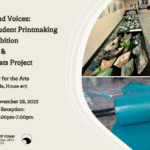
Constable, a true Romantic, possessed a rebellious spirit that infused his art.
Though he’s now a national treasure, during his lifetime, his innovative style garnered more acclaim on the continent than in his homeland.
His bold approach to landscape painting paved the way for future masters, inspiring French artists like Eugene Delacroix and Claude Monet, leaving an indelible mark on the art world.
Today, the picturesque area around Flatford Mill, immortalised by Constable’s brush, remains a haven for visitors.
They can meander along the banks of the River Stour, finding solace beneath the shade of oak trees, immersing themselves in the very scenes that fueled his creative vision.
Ironically, despite the region’s association with his name, Constable spent the majority of his life in London, where he famously rivalled the equally celebrated painter, Turner.
A pivotal moment in Constable’s artistic development came in 1811, when he first visited Bishop John Fisher and his family in Salisbury.
The city’s magnificent cathedral and surrounding landscape became a profound source of inspiration, giving rise to some of his most significant works.
Tragedy struck Constable in 1828 with the death of his beloved wife, Maria, from tuberculosis.
Devastated by this loss, he donned black attire for the remainder of his days, and a noticeable shift towards a darker palette and more melancholic themes permeated his art.
His depictions of Salisbury Cathedral are characterised by a sweeping grandeur, while his rendition of Stonehenge captures the ancient monument’s stark and imposing presence amid a bleak and desolate landscape.
However, his interpretation of Hampshire reveals yet another facet of his artistic genius.
The 1804 painting, A View at Hursley, stemmed from a visit to Sir William Heathcote at Hursley House.
Art historians believe that the watercolour likely portrays the view south from an upper window of the house, with the Isle of Wight discernible in the distance.
This perspective offers a unique glimpse into the Hampshire countryside through Constable’s eyes.
Constable holds the distinction of being the most renowned artist to paint the ruins of Netley Abbey.
His striking 1833 work, created just four years before his death, showcases the west end of the abbey nestled amongst a cluster of trees.
Legend has it that Constable’s initial encounter with the abbey’s haunting beauty occurred during his honeymoon.
Constable himself described his expressive technique, employed to capture the dramatic essence of Netley Abbey, as “experiments in natural philosophy.”
He masterfully used the interplay of light and shadow, texture and form, to convey the emotional weight of the scene.
As the artist eloquently stated, “The darkened trees framing the ruins of the gothic arches, hovering birds in a turbulent sky of brown, apricot and dull blue, all serve to intensify the atmospheric landscape.”
This evocative description perfectly encapsulates the power and beauty of Constable’s Hampshire landscapes, revealing a lesser-known but equally compelling chapter in his artistic journey.













